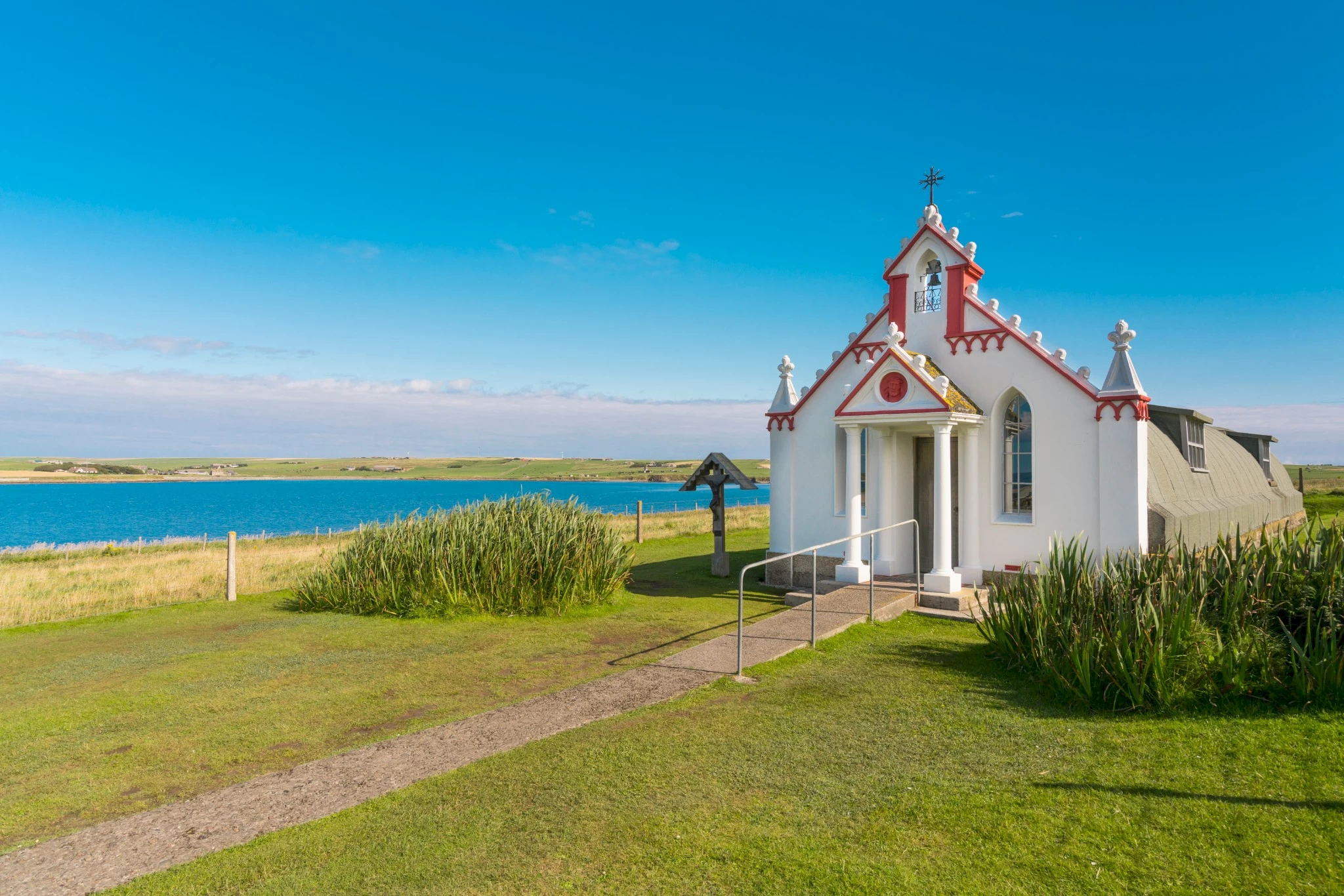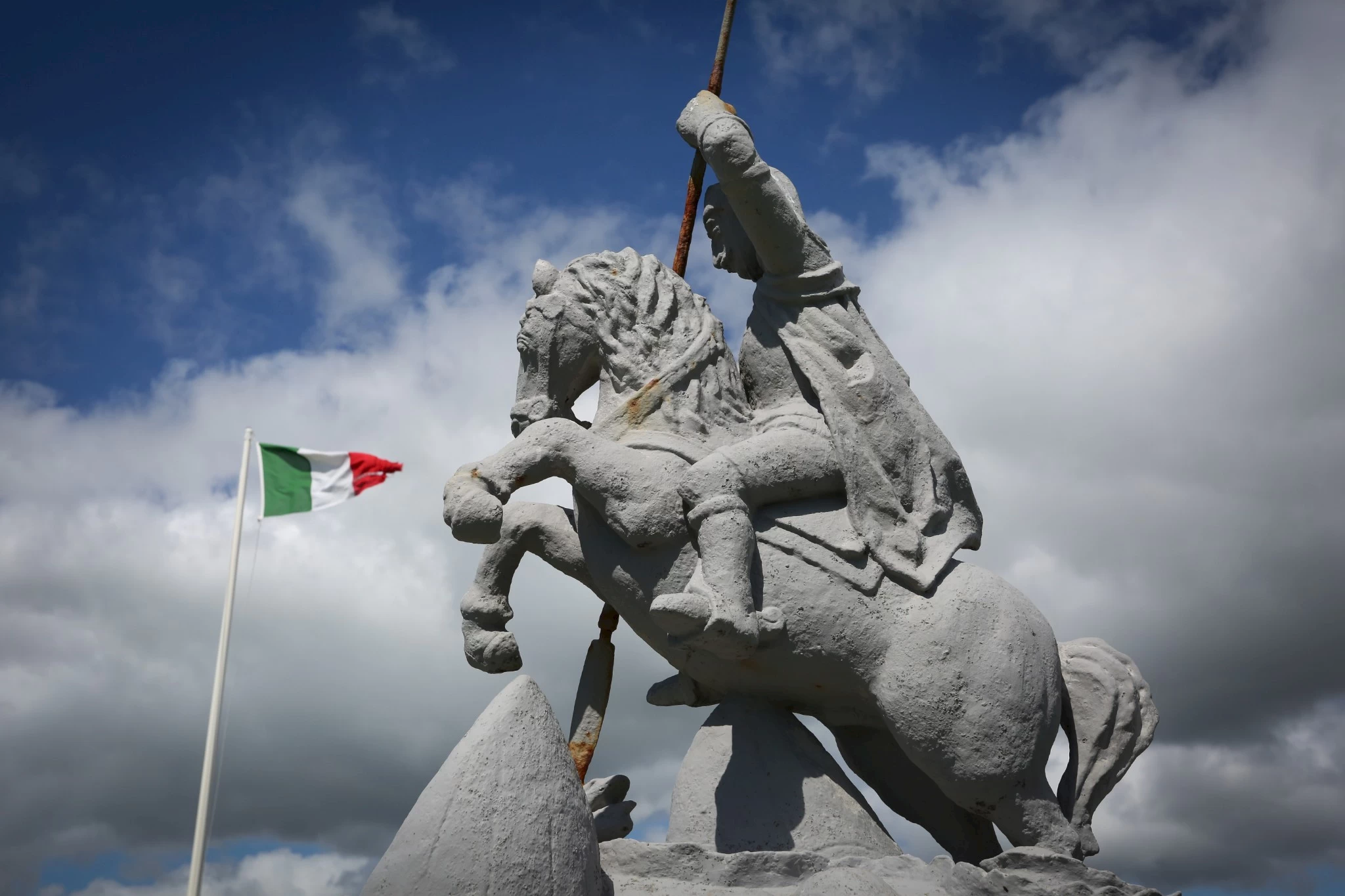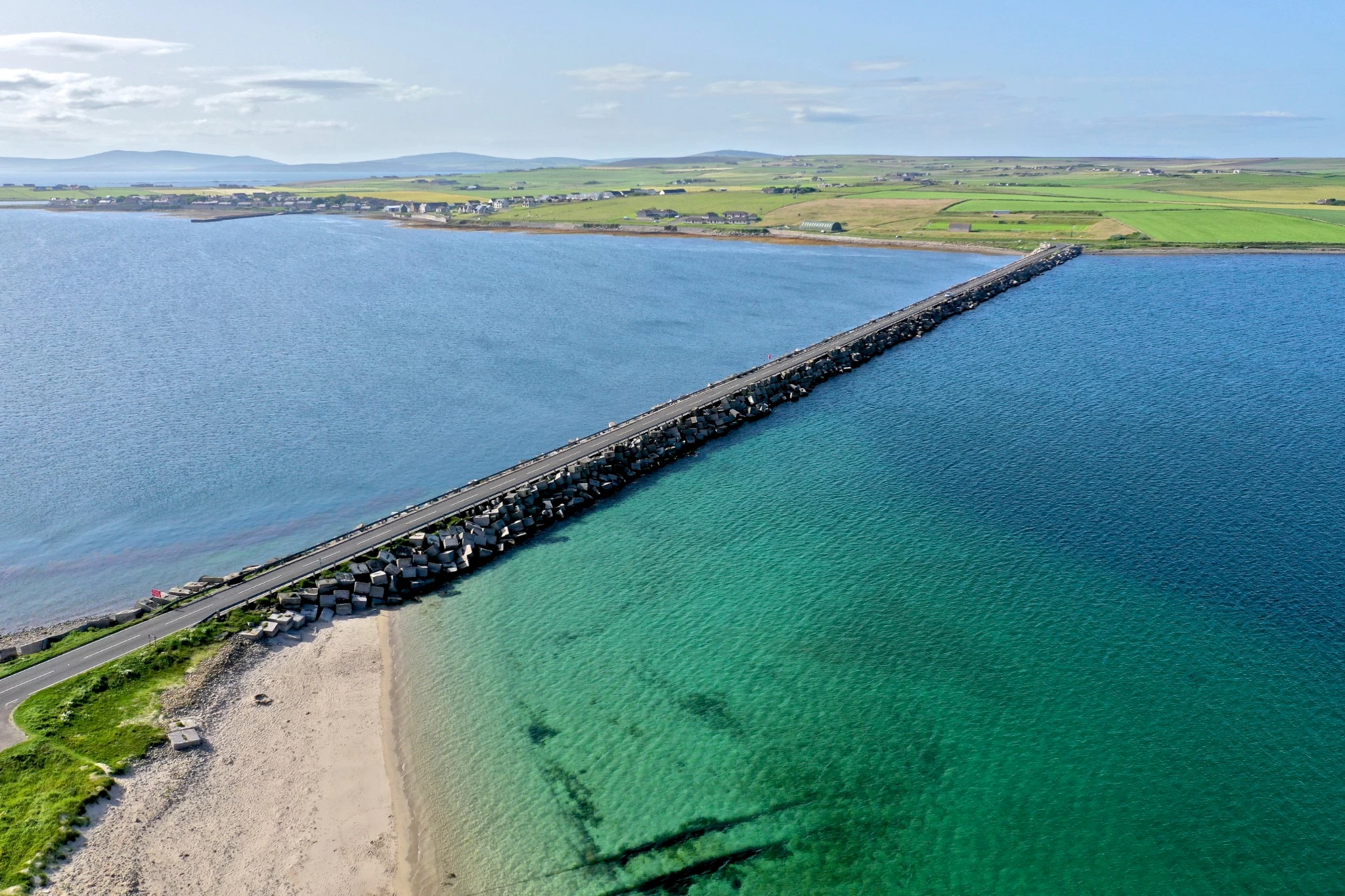The Italian Chapel stands as a white beacon of peace on the small Orkney island of Lamb Holm.
People from all over the world are drawn to it by its story of hope and faith over adversity. However, it is not the only surprising remnant of the infamous Camp 60, where over 500 Italian Prisoners of War were held after being captured in North Africa during WWII.

Adjacent to the car park is an often overlooked sculpture of St George, sitting on his rearing horse, slaying a dragon with his lance. The statue was created by one of the camp prisoners, artist Domenico Chiocchetti, who thought it would lift the spirits of his fellow captives when word came through that the Italian war effort was failing. It was completed on the 7th August 1943 and set-up in the camp parade square on top of a plinth with the inscription 'P di G, Italiano, Li 7-8-1943'. P di G stands for prigioniero di guerra - Italian for Prisoners of War.

Although in the UK, St George is primarily thought of as the patron saint of England, he is also the patron saint of soldiers and several Italian towns and villages, among many other things. According to fellow prisoner, Bruno Volpi, the sculpture was also meant to be 'a concrete representation of the desire to eliminate all wars, all wars that cause pain and injustice to so many people. It is a symbol of the will to 'kill' all misunderstandings between people of different cultures'.

Volpi placed a container within the plinth detailing the names of all the prisoners in the camp, along with Italian money. After the statue was badly vandalised in the 1970s, it was confirmed during restoration work that there was an old milk bottle hidden inside which held rolled up pieces of paper, Italian notes and coins. Unfortunately water damage meant the names were no longer legible. The bottle was replaced with the addition of British coins from the year of restoration. The container and the sensitive reconstruction, which included installing a replica lance made by a local blacksmith, are two of the sculpture's hidden secrets.
This detailed work of art is impressive in its own right, however its creation from scrap barbed wire and cement, along with its story as a symbol of hope, make it all the more remarkable. The statue preceded the chapel and in some ways it helped to pave the way for the ornate sanctuary by strengthening the relationship between the prisoners and the camp commander, Major Buckland. His love of all things Italian and his appreciation of Chiocchetti's sculpture ensured his enthusiasm and support when the artist approached him about building a place of worship. Constructed from two Nissen huts, Chiocchetti was responsible for a large part of the design of the Italian Chapel. The exquisitely decorated interior was mainly fashioned from scrap material and concrete.
Today, making the journey to visit Lamb Holm is an easy one thanks to a series of four causeways built by the prisoners, known as the Churchill Barriers. Completed in 1944, they link the five Orkney islands of Mainland, Lamb Holm, Glimps Holm, Burray and South Ronaldsay. Before these convenient roadways were constructed, boats were the only mode of transport between the islands.

However, the barriers were not built to connect remote communities, they were put in place as naval defences. Earlier blockships sunk to protect the Royal Navy fleet based in Scapa Flow proved ineffective, so Winston Churchill instructed the building of four permanent barriers. A shortage of labour force resulted in many Italian POWs being brought to Orkney. To maintain their morale, prisoners set about creating spaces in the camps where they could relax, have fun, reflect or pray. After the war, the prisoners were freed and Camp 60 was flattened. The statue of St George and the Italian Chapel are the only intact reminders of its existence.
Along with the enduring friendships that formed between the people of Italy and Orkney, they are part of a paradoxical heritage on the islands, where beautiful things have grown from the horror of war.
Susanne Arbuckle hosts the Adventures Around Scotland blog. You can also find her on Facebook, Instagram and Twitter.
The Promoting Orkney project has been part financed by the Scottish Government and the European Community Orkney LEADER 2014-2020